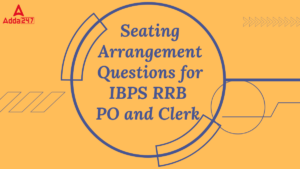Dear Readers,
It is time to pace up your preparation with New Pattern Questions of Quantitative Aptitude for SBI PO Mains and NIACL Assistant 2017. These Quant questions will also help you in preparing for BOB PO and NICL AO 2017 recruitment examination.
Q1. Ashutosh calculates his profit percentage on the selling price whereas Hitesh calculates his profit on the cost price. They find that the difference of their profit is Rs. 135. If the selling price of both of them are the same, and Ashutosh gets 30% profit and Hitesh gets 25% profit, then find their selling price.
(a) Rs. 1250
(b) Rs. 1150
(c) Rs. 1450
(d) Rs. 1350
(e) none of these
Q2. Sandesh got Rs 6000 as his share out of the total profit of Rs 9000 which he and Sanket earned at the end of one year. If Sandesh invested Rs 20000 for 6 months, whereas Sanket invested his amount for the whole year, the amount invested by Sanket was
(a) Rs 60000
(b) Rs 10000
(c) Rs 40000
(d) Rs 5000
(e) None of these
Q3. Avanish and Bikas entered into partnership with Rs 700 and Rs 600 respectively. After 3 months Avanish withdrew 2/7of his stock but after 3 months more he put back 3/5 of what he had withdrawn. The profits at the end of the year are Rs 726, how much of this should Avanish receive?
(a) Rs 633
(b) Rs 336
(c) Rs 663
(d) Rs 366
(e) None of these
Directions (Q4-5): The following questions are accompanied by three statements (A) or (I), (B) or (II), and (C) or (III). You have to determine which statements(s) is/are sufficient/necessary to answer the questions.
Q4. What is the value of a two–digit number?
A. The sum of the digits is 5.
B. The difference of the squares of the digits is 15.
C. The difference of their digits is 3.
(a) A and B together are sufficient
(b) B and C together are sufficient
(c) C and A together are sufficient
(d) Any one pair of A and B, B and C or C and A is sufficient
(e) A, B and C together are necessary
Q5. What is the perimeter of a rectangular field?
I. The area of the field is 2400 sq.metres.
II. The diagonal of the field is 50 metres.
III. The ratio between the length and the breadth of the field is 3 : 2.
(a) All I, II and III together are required
(b) Any two of I, II and III are sufficient
(c) Only I and II are required
(d) Only II and III are required
(e) None of these
Direction (Q.6-8): What should come in place of question-mark (?) in the following number series?
Q6. 5555 5506 5425 5304 5135 ?
(a) 4925
(b) 4910
(c) 4945
(d) 4995
(e) None of these
Q7. 840 1112 1322 1478 1588 ?
(a) 1660
(b) 1688
(c) 1692
(d) 1675
(e) None of these
Q8. 1338 2328 3048 3552 3888 4098 ?
(a) 4288
(b) 4208
(c) 4218
(d) 4298
(e) None of these
Directions (Q.9-10): In each of these questions, a number series is given. In each series only one number is wrong. Find out the wrong number.
Q9. 8.1, 9.2, 17.3, 26.5, 43.8, 71.5, 114.1
(a) 17.3
(b) 26.5
(c) 43.8
(d) 9.2
(e) None of these
Q10. 4, 10, 22, 46, 96, 190, 382
(a) 8
(b) 10
(c) 96
(d) 382
(e) None of these
Directions (Q.11.13): In each of these questions, two equations (I) and (II) are given. You have to solve both the equations and give answer
(a) if x>y
(b) if x≥y
(c) if x<y
(d) if x ≤y
(e) if x = y or if there is no relation between ‘x’ and ‘y’.
Directions (Q.14-15): Study the following information carefully to answer the questions that follow:
A box contains 2 blue marbles, 4 red marbles, 5 green marbles and 1 yellow marble.
Q14. If four marbles are picked at random, what is the probability that none is green?




 GA Capsule for SBI Clerk Mains 2025, Dow...
GA Capsule for SBI Clerk Mains 2025, Dow...
 The Hindu Review October 2022: Download ...
The Hindu Review October 2022: Download ...
 Seating Arrangement Questions for IBPS R...
Seating Arrangement Questions for IBPS R...





